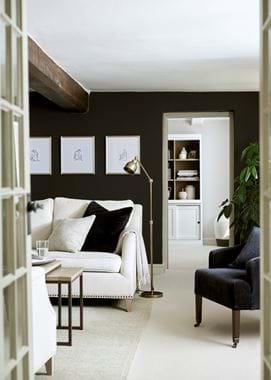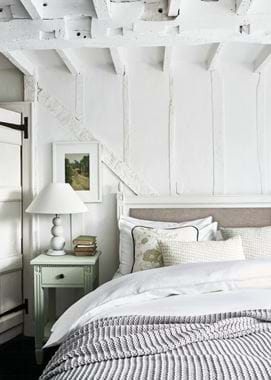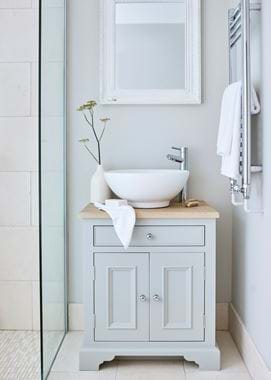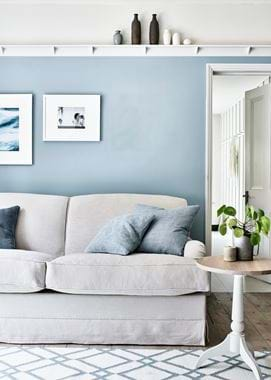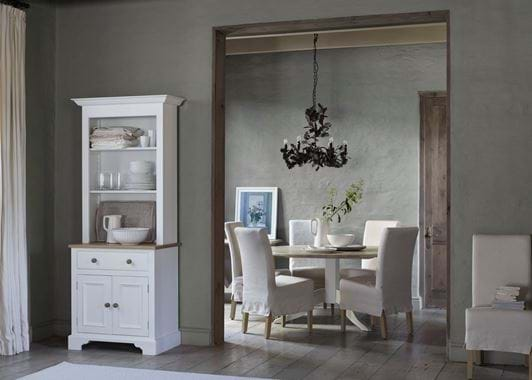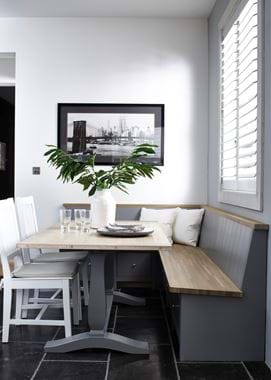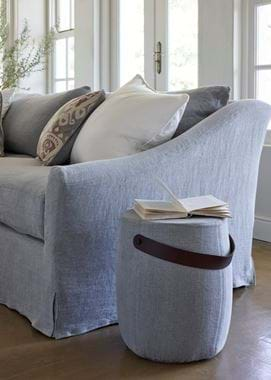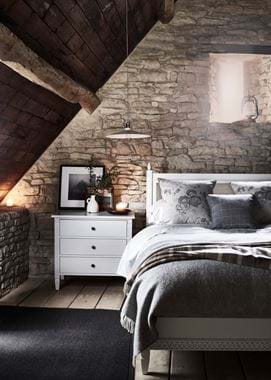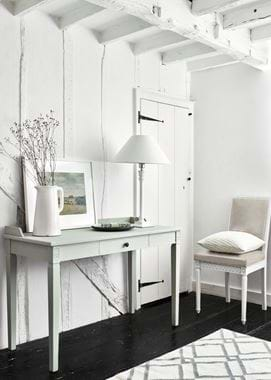Choosing furniture for a small space
Choosing furniture for a small space
Unless you’re lucky enough to live in a generously-proportioned home with a room for everything, the chances are that you’ll come up against a few practical and aesthetic challenges when it comes to space. Much more than simply choosing similarly small pieces though, furnishing a spatially-challenged home well involves a little clever thinking. Happily, we’ve done some of the legwork for you…
Think beyond footprint
Unless you’re in the kitchen, it’s not necessarily floorspace that’s important, especially in the living room where you spend most of your time sitting down not walking around. Here, it pays to think instead about how much useable seat space sofas and armchairs offer, choosing designs with slim arms and backs or more upright frames that mean the seat to footprint ratio is higher. Our Eva and Charlie designs are good examples, and might make better options than Olivia with its wide, sloping backrest or Lottie with its large arms.
The same goes for side, console and coffee tables. If having somewhere to rest cups of coffee, books, ornaments and lamps is more important in the room than manoeuvrability, then choose a square design with shelf space underneath, rather than a round pedestal. (Another good trick to make the most of tablespace is to opt for wall lights instead, or a floor lamp like Chetham that’ll tuck neatly under the sofa.)
In other rooms, it’s storage that’s the priority – something that’s especially true of bathrooms. Unless you have very little children, chances are that you’ll be the only person using the space at one time, but it’ll still have to accommodate the whole family’s paraphernalia. So while a pedestal or wall-hung sink might take up less floorspace, choosing a washstand with cupboards or shelves underneath instead will be a wiser investment.
Leave room to manoeuvre
If you’re not prepared to sacrifice space to move in favour of storage or seating, then there are a few tricks you can employ. Going back to side tables, it might be that a rectangular table with shelf space underneath is just the thing on the side of your sofa nearest the wall (choose a long, thin design like the Chichester tall table that won’t jut out too much), but a round one like Suffolk is better suited to the door side. That’s because, without any corners to bump into, circular designs are far easier for us to navigate. (You could also opt for a slim console behind the sofa to house lamps and books, rather than any side tables at all.) Don’t just limit this principle to tables though – armchairs with rounded backs, like Amelia or even Matilda, are better suited to the parts of your living room that are used as passing spaces, and will tuck into corners nicely too.
Likewise, if your dining table is in the middle of your kitchen or an open-plan space, a round design will stop it feeling like too much of a barrier. Have your heart set on a rectangular dining table? Focus thoughts of space saving on the seating instead and go for benches and stools that you can tuck underneath when you’re not using them. Benches also have the extra plus point of being able to squeeze an extra person on if needs be.
Smaller isn’t necessarily better
The first instinct when choosing furniture for a small room is to think, I need the smallest piece. But actually, you run the risk of the room feeling cluttered and uncomfortable. Yes, you do need to consider practicality, but it’s still a good idea to pick at least some designs with more substance and presence.
Think about the furniture that you’ll use most. In a living room, it’s probably the sofa, so choose a generous design that you can really stretch out on and pair it with a smaller armchair. That way, you won’t feel as if you’re compromising too much. While upstairs, we’d suggest going for the biggest bed you can and conceding on side table space. Not only will a big bed make sleeping much more comfortable for you (and your bedfellow) – which, after all, is the thing we do most in bedrooms – but it’ll give the room a real sense of ‘wow’ when you walk in. Statement headboards are especially good for enhancing this feeling as well, as are four-posters (and you really only need enough ceiling height to clear the top of the bed). Be generous in a guest bedroom too: a good night’s sleep will be the thing they remember most when they leave.
If you do find yourself having to choose smaller pieces, make up for it with accessories. Mirrors and wall art are a perfect opportunity to go big because they’re not taking up useable space. Try our Edinburgh and Ravenhead mirrors with their bold frames, or the oversized Sketch V and Deeper II prints rather than lots of small ones.
Prioritise multitaskers
Furniture that can fulfil two, even three, purposes will be a much more valuable use of space than those that do just one. In the living room, footstools are an obvious place to start: a firm-topped one like Milo or Arthur can double up as a coffee or side table (depending on its size) and an extra seat. Then there’s our Olivia sofa bed which, while not the most compact of designs, is a welcome addition if your main problem is a small house with too few bedrooms.
Around the dining table, make your seating work extra hard by installing a built-in bench like Buckland (visit us in store or order a copy of our directory to find out more about this design) that has storage space underneath. And, as well as being easy to tuck underneath the table, you can also carry a stool like Carter through to the living room to become another side table when feasting turns into lounging.
In the bedroom, it makes sense to use chests of drawers as bedside tables rather than having separate clothes storage (useful if you’ve sized up on the bed), and it’s also easy to devote a corner of a dressing table to book, glass of water and lamp. And, if lack of room downstairs means that your workspace lives in a spare bedroom, choosing a desk that’s pretty enough to become a dressing table (or, indeed, a dressing table that’s practical enough to be a desk) will ensure guests don’t feel as if they’re sleeping in an office. Both Chichester and Larsson would fit the bill perfectly.
Struggling to find the perfect piece for a small space? Pop into one of our stores with your dimensions, and our expert home specialists will help you pinpoint just what you’re looking for.

